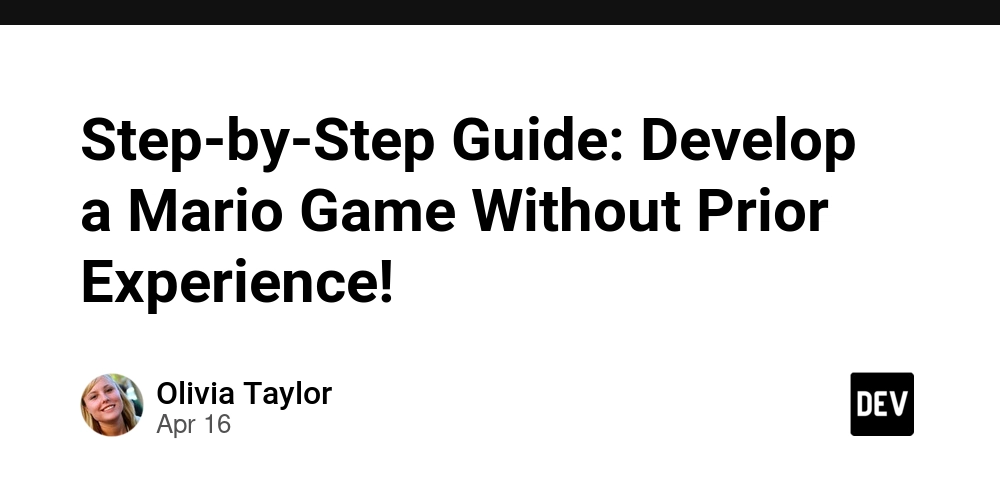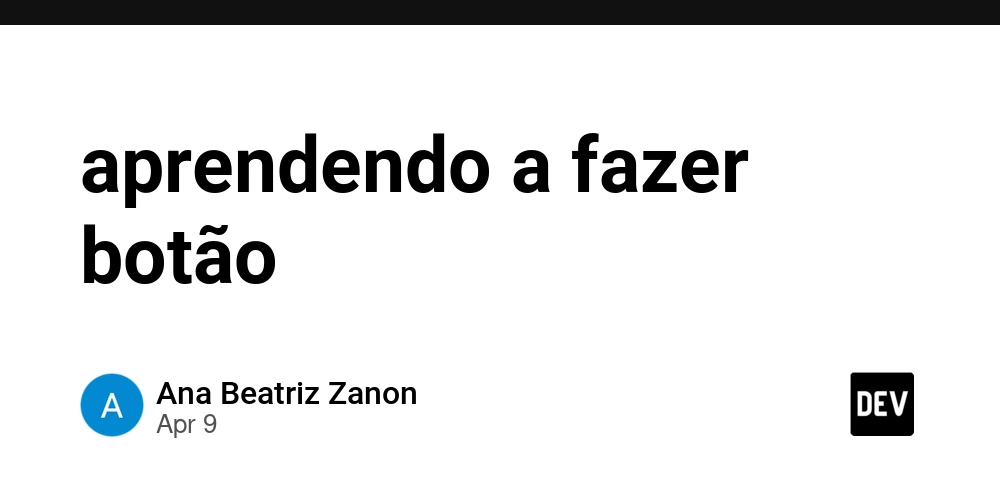Step-by-Step Guide: Develop a Mario Game Without Prior Experience!
Have you ever dreamed of building your own Mario-style game, but felt intimidated by coding? Don’t worry—you’re not alone. Whether you're a beginner or someone just dabbling in game development, creating a side-scrolling platformer inspired by Super Mario is totally within reach. This guide will walk you through everything you need to know to start developing your very own Mario-inspired game—no prior experience required. Why Make a Mario-Style Game? Before we dive into the steps, let’s talk about why building a Mario-style game is a great beginner project: Familiar Gameplay: You already know how it should feel. Clear Mechanics: Running, jumping, collecting coins—classic and achievable. Great for Learning: It covers essential concepts like physics, collisions, animations, and level design. Understand the Core Gameplay Elements Let’s break down what makes a Mario game... well, a Mario game. 2D Side-Scrolling Movement Jump Mechanics Enemy Behaviour Power-Ups & Collectibles Level Progression End Goals (like a flag or checkpoint) These elements will shape the foundation of your game, regardless of what tools or platform you use. Choose a Game Engine or Platform If you're just starting out, GDevelop or Scratch are great options. If you're comfortable trying a bit of code, Godot or Unity will give you more long-term power. Build Your Player Character Whether you’re drawing your own sprite or using free assets, here’s what your main character should do: Run left and right Jump (with gravity) Interact with the environment (blocks, platforms, etc.) Collect items (coins, mushrooms, etc.) Pro Tip: Many free Mario-style sprite sheets are available online on sites like OpenGameArt, atozfreegames.com, itch.io, and Kenney.nl. Create the Game World Start building your first level using a tilemap or grid-based layout. You’ll need: Ground tiles Pipes or platforms Bricks/blocks Background visuals Hidden areas (optional) Level Design Tips: Start simple: one level with a clear beginning and end Gradually introduce new elements Playtest after every change Add Enemies and Obstacles No Mario-style game is complete without Goomba-like enemies! Basic enemy behavior: Patrol left and right Hurt the player on contact Can be defeated by jumping on them More advanced behaviors (if you're ready for it): Enemies that shoot Flying or jumping enemies Boss fights You can create this behavior visually (in Scratch or GDevelop) or with simple code (in Godot or Unity). Include Sound & Music Sound is key to making your game feel complete. You’ll want: Jump sounds Coin collection sounds Background music Game Over jingle There are lots of royalty-free audio libraries like: Freesound.org Zapsplat Kenney Audio Assets Playtest & Polish Game development is a process of iteration. Don’t aim for perfection right away—just keep testing. Things to check: Does jumping feel responsive? Do collisions work correctly? Are the enemies too hard or too easy? Does the level have a clear goal? Ask friends to play it and give feedback! Export and Share Once your game is ready: **Scratch: **Share it directly on the Scratch website GDevelop / Godot / Unity: Export as a web game, desktop game, or even mobile itch.io: A great free platform to upload your indie game This is the most rewarding step—letting others enjoy your creation! Bonus Tips for Beginners Start small: A one-level demo is better than an unfinished big idea. Use tutorials: YouTube and forums like r/gamedev and Stack Overflow are goldmines. Stay motivated: Game dev takes time, but every step you complete is a win. Conclusion You don’t need to be a coding genius to develop a fun and fully playable Mario-style game. With today’s beginner-friendly tools, free assets, and communities ready to help you, all you really need is creativity and patience. However, if you want to play Mario games online, you can visit our website. Whether you're using Scratch, GDevelop, or Unity, this project can teach you valuable programming, design, and problem-solving skills—and you’ll end up with something you can actually play and share.

Have you ever dreamed of building your own Mario-style game, but felt intimidated by coding? Don’t worry—you’re not alone. Whether you're a beginner or someone just dabbling in game development, creating a side-scrolling platformer inspired by Super Mario is totally within reach. This guide will walk you through everything you need to know to start developing your very own Mario-inspired game—no prior experience required.
Why Make a Mario-Style Game?
Before we dive into the steps, let’s talk about why building a Mario-style game is a great beginner project:
Familiar Gameplay: You already know how it should feel.
Clear Mechanics: Running, jumping, collecting coins—classic and achievable.
Great for Learning: It covers essential concepts like physics, collisions, animations, and level design.
Understand the Core Gameplay Elements
Let’s break down what makes a Mario game... well, a Mario game.
2D Side-Scrolling Movement
Jump Mechanics
Enemy Behaviour
Power-Ups & Collectibles
Level Progression
End Goals (like a flag or checkpoint)
These elements will shape the foundation of your game, regardless of what tools or platform you use.
Choose a Game Engine or Platform
If you're just starting out, GDevelop or Scratch are great options. If you're comfortable trying a bit of code, Godot or Unity will give you more long-term power.
Build Your Player Character
Whether you’re drawing your own sprite or using free assets, here’s what your main character should do:
Run left and right
Jump (with gravity)
Interact with the environment (blocks, platforms, etc.)
Collect items (coins, mushrooms, etc.)
Pro Tip: Many free Mario-style sprite sheets are available online on sites like OpenGameArt, atozfreegames.com, itch.io, and Kenney.nl.
Create the Game World
Start building your first level using a tilemap or grid-based layout. You’ll need:
Ground tiles
Pipes or platforms
Bricks/blocks
Background visuals
Hidden areas (optional)
Level Design Tips:
Start simple: one level with a clear beginning and end
Gradually introduce new elements
Playtest after every change
Add Enemies and Obstacles
No Mario-style game is complete without Goomba-like enemies!
Basic enemy behavior:
Patrol left and right
Hurt the player on contact
Can be defeated by jumping on them
More advanced behaviors (if you're ready for it):
Enemies that shoot
Flying or jumping enemies
Boss fights
You can create this behavior visually (in Scratch or GDevelop) or with simple code (in Godot or Unity).
Include Sound & Music
Sound is key to making your game feel complete. You’ll want:
Jump sounds
Coin collection sounds
Background music
Game Over jingle
There are lots of royalty-free audio libraries like:
Freesound.org
Zapsplat
Kenney Audio Assets
Playtest & Polish
Game development is a process of iteration. Don’t aim for perfection right away—just keep testing.
Things to check:
Does jumping feel responsive?
Do collisions work correctly?
Are the enemies too hard or too easy?
Does the level have a clear goal?
Ask friends to play it and give feedback!
Export and Share
Once your game is ready:
**Scratch: **Share it directly on the Scratch website
GDevelop / Godot / Unity: Export as a web game, desktop game, or even mobile
itch.io: A great free platform to upload your indie game
This is the most rewarding step—letting others enjoy your creation!
Bonus Tips for Beginners
Start small: A one-level demo is better than an unfinished big idea.
Use tutorials: YouTube and forums like r/gamedev and Stack Overflow are goldmines.
Stay motivated: Game dev takes time, but every step you complete is a win.
Conclusion
You don’t need to be a coding genius to develop a fun and fully playable Mario-style game. With today’s beginner-friendly tools, free assets, and communities ready to help you, all you really need is creativity and patience. However, if you want to play Mario games online, you can visit our website.
Whether you're using Scratch, GDevelop, or Unity, this project can teach you valuable programming, design, and problem-solving skills—and you’ll end up with something you can actually play and share.




























![[Webinar] AI Is Already Inside Your SaaS Stack — Learn How to Prevent the Next Silent Breach](https://blogger.googleusercontent.com/img/b/R29vZ2xl/AVvXsEiOWn65wd33dg2uO99NrtKbpYLfcepwOLidQDMls0HXKlA91k6HURluRA4WXgJRAZldEe1VReMQZyyYt1PgnoAn5JPpILsWlXIzmrBSs_TBoyPwO7hZrWouBg2-O3mdeoeSGY-l9_bsZB7vbpKjTSvG93zNytjxgTaMPqo9iq9Z5pGa05CJOs9uXpwHFT4/s1600/ai-cyber.jpg?#)











































































































































![[The AI Show Episode 144]: ChatGPT’s New Memory, Shopify CEO’s Leaked “AI First” Memo, Google Cloud Next Releases, o3 and o4-mini Coming Soon & Llama 4’s Rocky Launch](https://www.marketingaiinstitute.com/hubfs/ep%20144%20cover.png)





























































































































![[FREE EBOOKS] Machine Learning Hero, AI-Assisted Programming for Web and Machine Learning & Four More Best Selling Titles](https://www.javacodegeeks.com/wp-content/uploads/2012/12/jcg-logo.jpg)








































































![Rogue Company Elite tier list of best characters [April 2025]](https://media.pocketgamer.com/artwork/na-33136-1657102075/rogue-company-ios-android-tier-cover.jpg?#)








































































_Andreas_Prott_Alamy.jpg?width=1280&auto=webp&quality=80&disable=upscale#)





























































































![What’s new in Android’s April 2025 Google System Updates [U: 4/18]](https://i0.wp.com/9to5google.com/wp-content/uploads/sites/4/2025/01/google-play-services-3.jpg?resize=1200%2C628&quality=82&strip=all&ssl=1)










![Apple Watch Series 10 Back On Sale for $299! [Lowest Price Ever]](https://www.iclarified.com/images/news/96657/96657/96657-640.jpg)
![EU Postpones Apple App Store Fines Amid Tariff Negotiations [Report]](https://www.iclarified.com/images/news/97068/97068/97068-640.jpg)
![Apple Slips to Fifth in China's Smartphone Market with 9% Decline [Report]](https://www.iclarified.com/images/news/97065/97065/97065-640.jpg)


































































































































